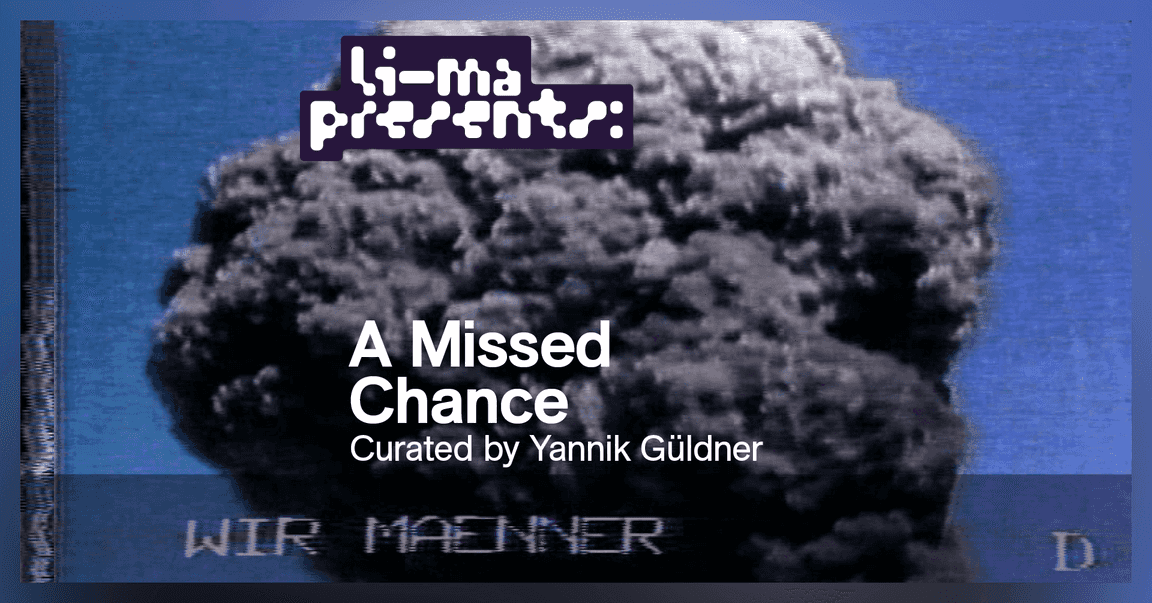
LI-MA Presents: A Missed Chance
New edition of LI-MA Presents, curated by guest curator Yannik Güldner. Join us for an evening of screenings and talks at LAB111.
How do human stories fit within Earth’s vast, non-human timeline? Our guest-curated series returns with LI-MA Presents: A Missed Chance. Each work sheds light on how our era may be remembered in the deep future, probing humanity’s uncertain legacy and inviting us to contemplate the significance—and limits—of our influence.
What does it mean to leave a mark on the Earth—and who decides if it’s meaningful enough to last? A Missed Chance is a curated screening responding to the recent decision by the International Union of Geological Sciences (IUGS) to reject the formal inclusion of the Anthropocene in the Geologic Time Scale. This decision raises a provocative question: in the grand scale of Earth’s history, how do we recognise the profound yet fleeting impact of human activity?
We invite viewers to explore our entanglement with planetary history beyond a human-centred perspective. How do decades of technological, industrial, and environmental change reshape landscapes meant to endure millennia? The selected works ask us to consider what stories remain of us when time stretches into deep, incomprehensible scales. The pieces move beyond documenting environmental degradation and open up pathways to other worlds, unveiling visions that question our sense of permanence.
Programme Overview
Guest curator Yannik Güldner has selected works that explore moments where humanity’s influence brushes up against the sublime and the unknowable, inviting contemplation into how our actions shape not just the present but the deep future. In witnessing these works, we may begin to see the Anthropocene not as an era but as a rupture—a shift that reveals new realities while underscoring the impermanence of our human imprint.
Garagedoor December 2nd, Astrid van Nimwegen, 2013, 01:55 min., in collection: LI-MA
The door opens, revealing a pictorial Dutch landscape. A long, single take in which light and time are given space to evolve slowly. Each video in the series follows the same structure: a garage door opens, followed by an uninterrupted view of about two minutes on the environment that is behind it. The garage door becomes like a heavy theatre curtain that opens to give a glance on a stage. When the play has ended, the curtain closes again.
Astrid van Nimwegen (b. 1985, NL) is a Dutch visual artist and filmmaker exploring the complex dynamics between humans and animals through non-narrative works that emphasize coexistence and shared time. Her practice seeks alternative systems for equality among humans, animals, and nature, inviting contemplation of our interconnected lives.
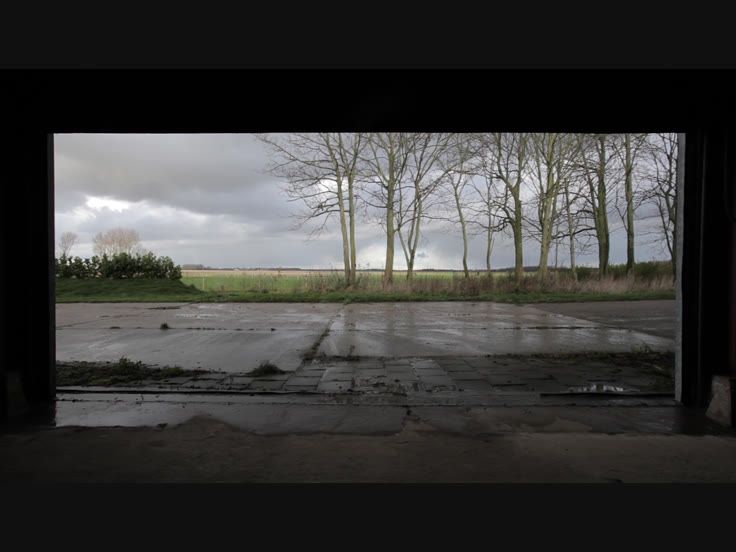 Garagedoor December 2nd, Astrid van Nimwegen
Garagedoor December 2nd, Astrid van Nimwegen
Der Geisterseher, Klaus vom Bruch, 1979, 15:51 min., in collection: LI-MA
The title of Klaus vom Bruch’s Der Geisterseher refers to the Gothic genre of the Schauerroman and, in particular, Schiller’s Der Geisterseher: Aus den Memoires des Grafen von O** (1787-89). Klaus vom Bruch’s video compels us to compare the television set to the pre-cinematic contraption of the phantasmagoria, which induced shock and terror in its audience by seeming to materialise specters in their midst.
Klaus vom Bruch (b. 1952, DE) is a pioneering video and multimedia artist whose works from the 1980s critically interrogate identity in relation to Western cultural mythology, war, and the pervasive influence of media. By juxtaposing personal imagery with archival films and commercial media, vom Bruch creates hypnotic visual systems that explore the intersections of subjectivity, history, and mass media.
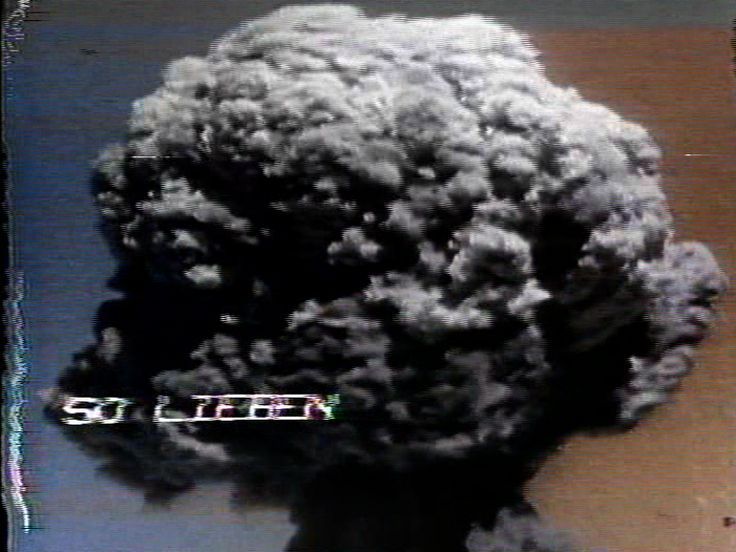 Der Geisterseher, Klaus vom Bruch
Der Geisterseher, Klaus vom Bruch
As Above, So Below, Mark IJzerman & Sébastien Robert, 2021, 12:09 min., in collection: LI-MA
As Above, So Below explores the changing landscape of La Araucanía region in south-central Chile through visuals and sound. This video probes into the dualism of man’s relationship with nature via sonic research made by Sébastien Robert, French sound artist, researcher and master student of The Hague’s ArtScience Interfaculty, and investigative visuals created from satellite imagery as well as microscopic and drone footage by Dutch media artist Mark IJzerman. During a residency in Chile they researched the logging industry that has been eroding the biodiversity of the region, causing disruption to the ecosystem.
Mark IJzerman (b. 1988, NL) is an interdisciplinary artist exploring planetary processes such as eroding biodiversity and warming waters from more-than-human perspectives. Working on the intersection of ecology and media art, IJzerman uses digital technologies to create processes that have their own agency to make works creating intimacy between us and the other-than-human. Sébastien Robert (b. 1993, FR) is an interdisciplinary artist and researcher who develops a practice at the intersection of visual and sound art, technology, science, and ethnography. Most of his projects revolve around a research cycle, ‘You’re no Bird of Paradise’, through which he explores disappearing Indigenous sonic rituals and cosmologies.
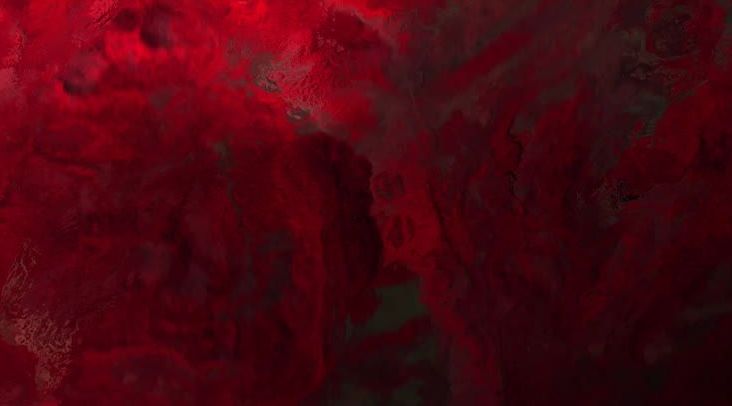 As Above, So Below, Mark IJzerman & Sébastien Robert
As Above, So Below, Mark IJzerman & Sébastien Robert
Grid Corrections, Gerco de Ruijter & Michel Banabila, 01:27 min., 2016
This work was made mining the Thomas Jefferson's Grid in Google Earth. By superimposing a rectangular grid on the earth surface, a grid built from exact square miles, the spherical deviations have to be fixed. After all, the grid has only two dimensions. The north-south boundaries in the grid are on the lines of longitude, which converge to the north. The roads that follow these bounderies must dogleg every twenty-four miles to counter the diminishing distances.
Michel Banabila (b. 1961, NL ) is a sound artist, composer, and producer. Banabila releases music since 1983 and has produced musical scores for numerous films, documentaries, theatre plays and choreographies. He worked / performed in The Netherlands, Poland, Lebanon, UK, South Africa, Russia, Japan, Spain, China, USA and Belgium. Gerco de Ruijter (b. 1961, NL) is a Rotterdam-based visual artist working in the field of photography and film. His art explores how far presentation of the landscape can be reduced and yet still remain recognisable.
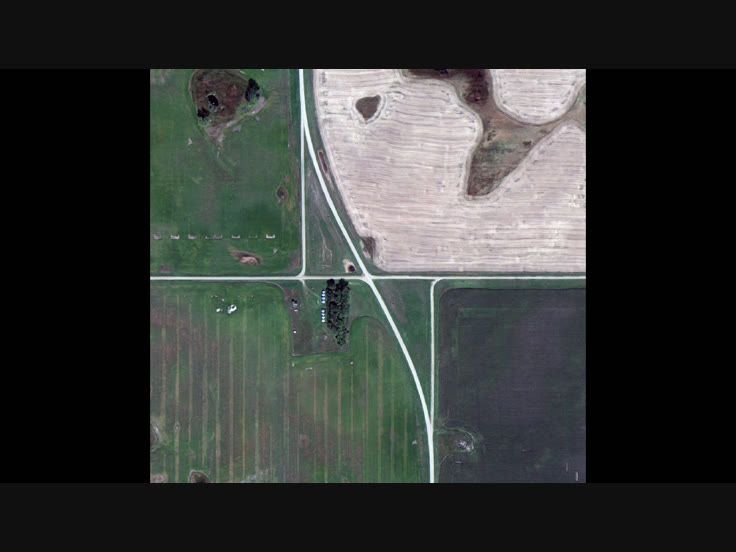 Grid Corrections, Gerco de Ruijter & Michel Banabila
Grid Corrections, Gerco de Ruijter & Michel Banabila
Know Your Stones, Katarina Jazbec, 21 min., 2023
Young climate activists, steelworkers, and a geologist come together in a dream-sharing, time-travelling space full of nightmares and aspirations. Europe's biggest steelmaking site, a limestone quarry, the proximity of Garzweiler open pit coal mine—the lives of protagonists are intimately intertwined with stone matters. Their special bonds with ores, fossil fuels, and machines act as the oracles for the future. As we face climate change, who else could speak on behalf of stones about the faith of humanity?
Katarina Jazbec (b. 1991, Slovenia) is a Rotterdam-based visual artist and a filmmaker using participatory artistic tools, such as movement scores, reading groups, rituals and writing. Responding to our complex and divided times, she searches for new forms of storytelling that can carry a plurality of perspectives and still feel accessible. Central to Jazbec's practice is the question of human and non-human agency in the current economic system.
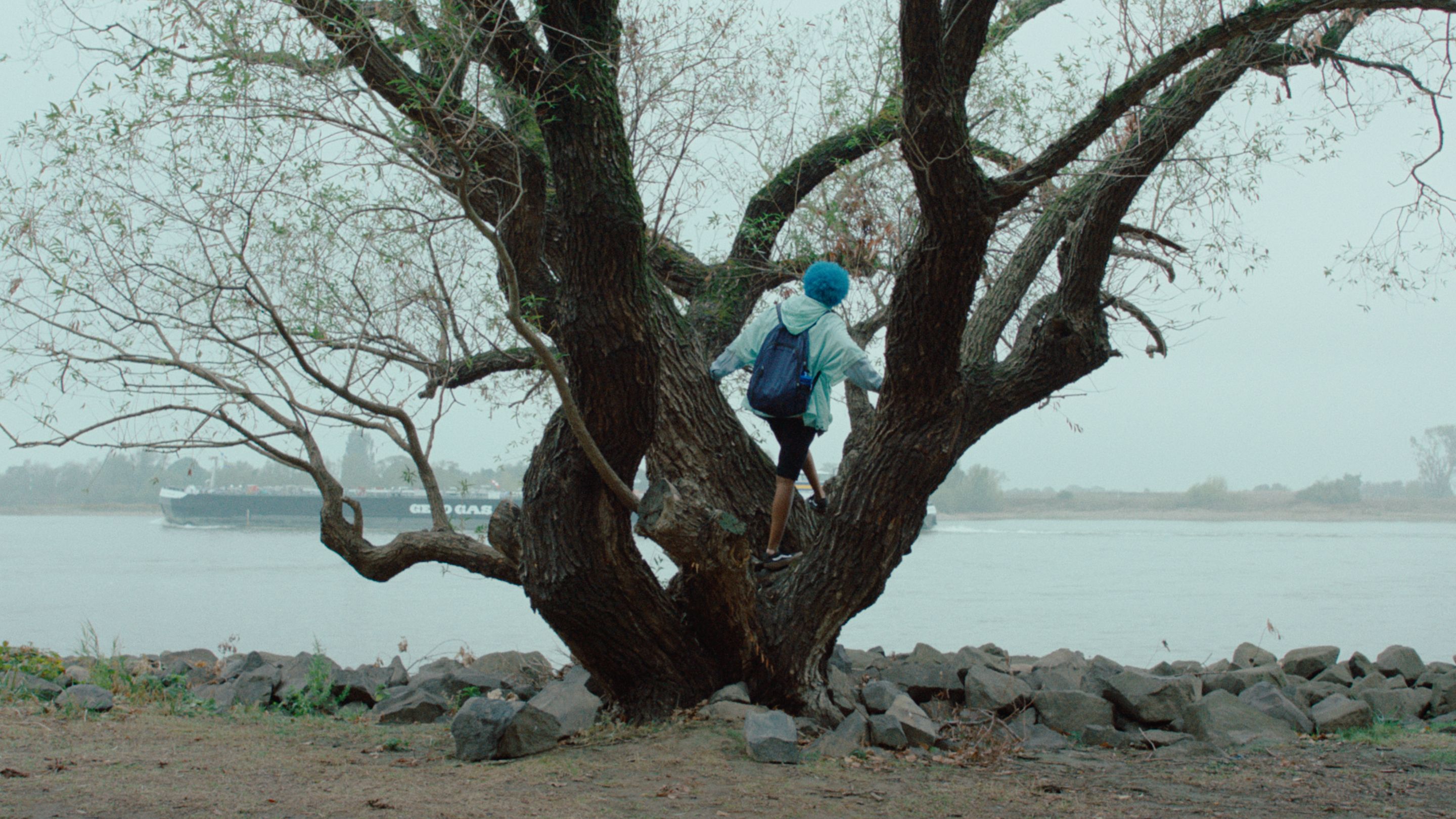 Know Your Stones, Katarina Jazbec
Know Your Stones, Katarina Jazbec
We Exhale, Tanja Engelberts, 2024, 19:28 min.
Throughout the summer of 2022, Engelberts followed the Rhône river from the Mediterranean to its source in Switzerland, charting its transformations, its journey, and its many voices. Engelberts later collaborated with sound artist Liz Harris to form sensitive soundscapes from ambient noise combined with field recordings. Together, they created a poetic means to reflect on how a poisoned river might possibly exhale.
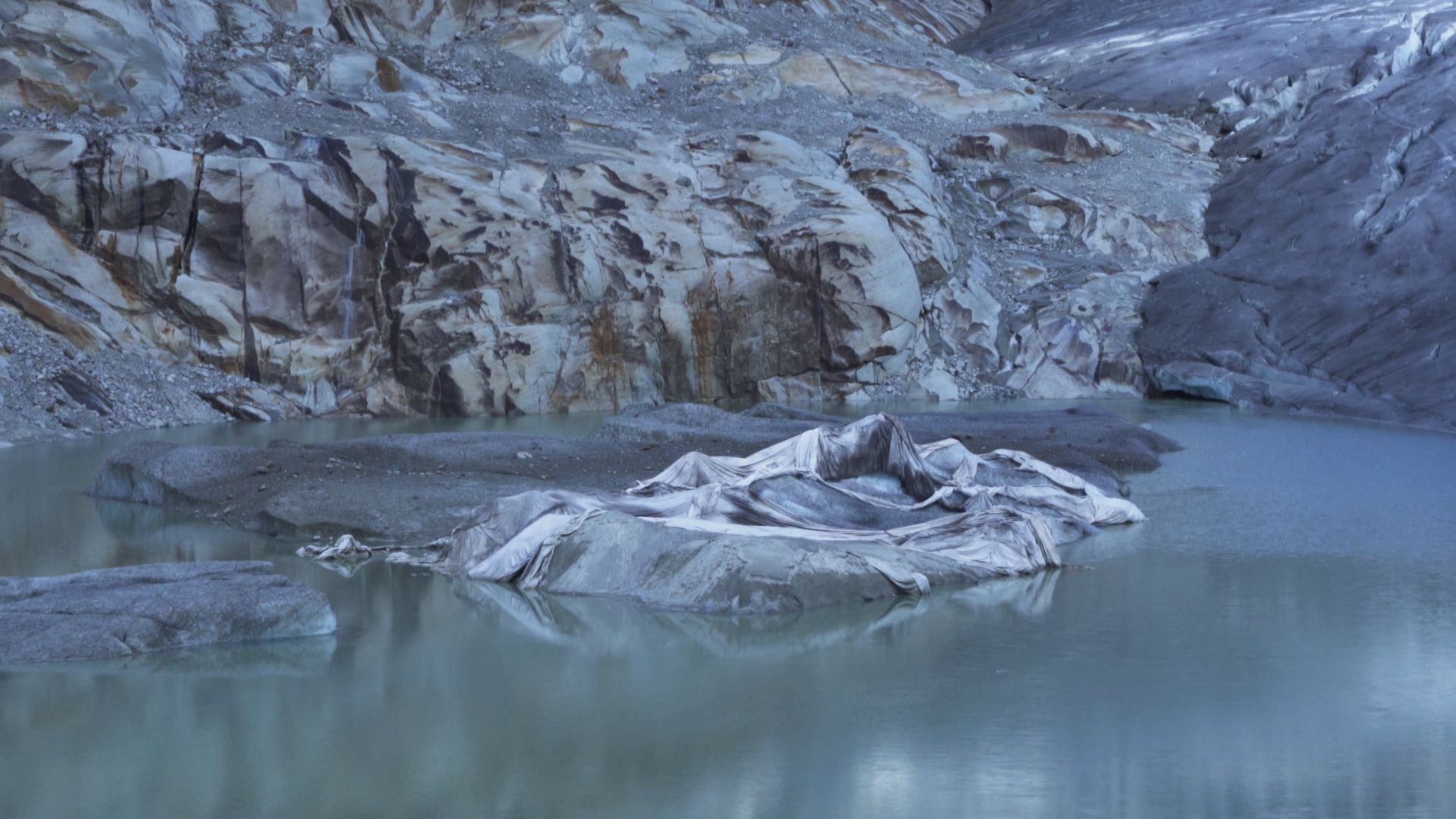 We Exhale, Tanja Engelberts
We Exhale, Tanja Engelberts
Panorama Tata - A Plumed Serpent's View, Michiel van Bakel, 2024, 07:47 min., in collection: LI-MA
Imagine what the world looks like through the eyes of the plumed serpent. What would happen if you add up the optical sensitivities of a bird that can see into the ultraviolet and a snake that can sense infrared. You could get something as in this animated time-lapse shot in full-spectrum, a peek into more-than-human sight.
Michiel van Bakel (b. 1966, NL) is a sculptor who crafts dynamic perspectives from frozen moments by blending photography, video, and digital techniques. His technically driven approach creates a poetic virtual reality where the essence of "human-ness" remains central.
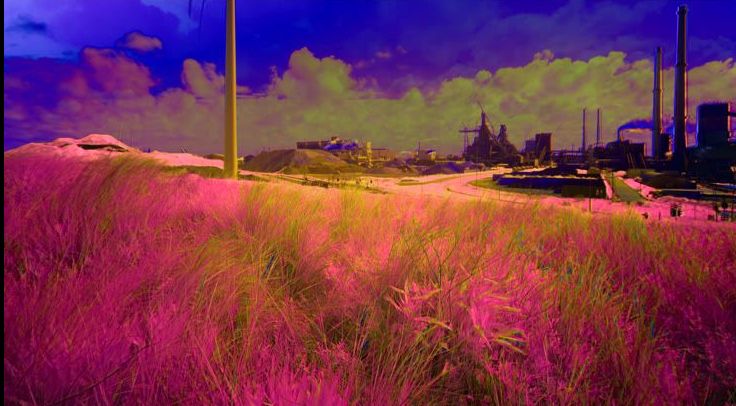 Panorama Tata - A Plumed Serpent's View, Michiel van Bakel
Panorama Tata - A Plumed Serpent's View, Michiel van Bakel
The Onion, Marina Abramović, 1996, 20:05 min., in collection: LI-MA
The first shot is a close up of Abramović looking upward and holding a large onion. Her fingernails are painted bright red, just like her lips. Slowly she brings the onion closer to her mouth, taking a large bite from it and beginning to chew.
Marina Abramović (b. 1946, RS) is a pioneering conceptual and performance artist who explores body and endurance art, using her own body as both subject and medium to test physical and mental limits. Her work, spanning over 50 years, examines the dynamic between performer and audience, involving viewer participation to push boundaries and reimagine identity within performance as a visual art form.
 The Onion, Marina Abramović
The Onion, Marina Abramović
About the Curator
Yannik Güldner is an auto-didact curator and programmer based in The Hague, investigating the intersections of contemporary and popular culture. Aiming to question structures of power and society at large through the eyes of upcoming and renewed artists within their multidisciplinary practices. He is interested in creating narratives across the borders of disciplines that interlink art, science and academia with one another. By facilitating spaces that mediate between audience and artist through exchange and collective learning, he aims to contribute to the understanding of entangled environments.
Header image: Klaus vom Bruch, Der Geisterseher, 1979, 15:51 min., in collection: LI-MA.







